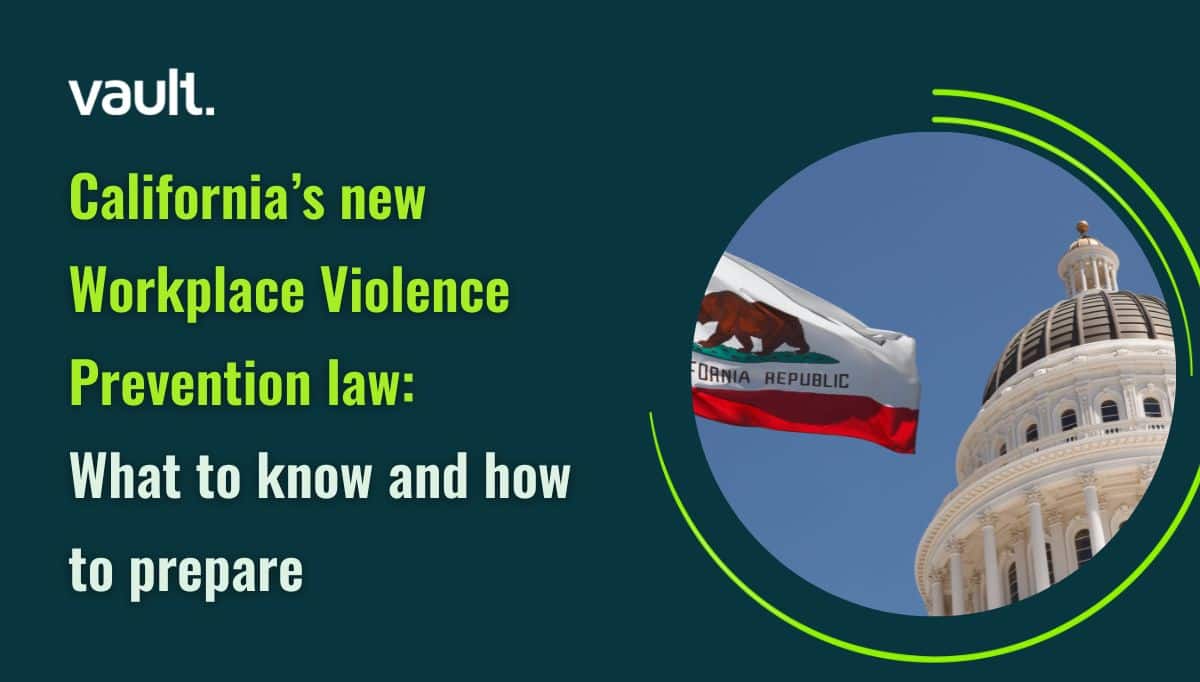
Workplace bullying, sexual harassment, and discrimination are problems that will be witnessed or experienced by a majority of the workforce at some point in time. Most of those experiences remain unreported, creating an invisible threat for businesses that destabilizes culture and impacts productivity, talent, and ultimately your bottom line.
- What is Workplace Bullying?
- Examples of Workplace Bullying
- The Possible Effects
- How Workplace Bullying Can Affect You as an Individual
- How it Affects The Work in The Office
- Are There Any Laws Addressing Workplace Bullying?
- Who To Turn To in Case of Bullying at Work
- Workplace Bullying Statistics
What is Workplace Bullying?
According to ACAS, workplace bullying is “behavior from a person or group that is unwanted and makes you feel uncomfortable”. Examples may include feeling frightened, intimidated, less respected or put down, made fun of, and made to feel uncomfortable or humiliated, upset or insulted.
All workplaces should have a policy on bullying explaining how it should be handled. But even if there is no policy, your employer has a legal duty of care to protect you while you’re at work, including dealing with issues relating to bullying and harassment.
It should be noted that not all workplace bullying is physical in nature, which can make it difficult to prove you’re being harassed or threatened at work. The National Bullying Helpline in the UK suggests asking yourself the following questions to help you determine whether you are being bullied at work:
- Do I feel intimidated or threatened at work?
- Am I regularly humiliated or ridiculed in front of my colleagues?
- Have I been called names?
- Are my efforts consistently undervalued or disregarded?
- Do I feel sick or nauseous when working with a particular colleague or manager?
Given the current growth in remote working, digital bullying and discrimination are also becoming a challenge. As many office workers shift from face-to-face interactions to a predominantly online existence, the potential for workplace bullying and discrimination is shifting in parallel. And with most incidents going unreported, the solution for some victims is simply to leave their job.
If you are forced to leave your job because of severe bullying that your employer did nothing about, you might be able to claim constructive dismissal at an employment tribunal. According to the UK government website, the claims of unlawful treatment that can be made to an employment tribunal in the UK include:
- Unfair dismissal
- Discrimination
- Unfair deduction from your pay
In the US, the US Department of Health and Human Services defines workplace bullying as unwelcome behavior that occurs over a period of time and is meant to harm someone who feels powerless to respond. Again, it’s not always physical or even face-to-face and can include:
Teasing and threatening to cause harm.
Social bullying, another category of workplace bullying might happen by leaving someone out of a meeting on purpose or publicly reprimanding someone.
A 2017 survey by the Workplace Bullying Institute estimated that 61% of US employees are aware of abusive conduct in the workplace, 19% have experienced it and another 19% have witnessed it. Not all bullying in the US is actionable under federal law. Bullying in the US is only actionable under federal law when it is tied to a protected category such as race or sex, as well as harassment on the basis of color, national origin, race, religion, and sex. Other federal laws prohibit such behavior on the basis of age, disability, and genetic information.
Workplace bullying can be hard to define, but by and large workplace bullying is always intentional and doesn’t happen by accident.
Examples of Workplace Bullying
Examples of workplace bullying, according to the UK government include:
- Someone or people spreading false or malicious rumors about you
- Someone keeps putting you down in meetings or other unfair treatment that aims to exclude
- Picking on or regularly undermining someone
- Your boss does not let you go on training courses but they allow everyone else to
- Your boss keeps giving you heavier workloads than everyone else
- Your team never lets you join social events
In the US, the above are all examples of bullying, as well as:
- Targeted practical jokes
- Being purposely misled about work duties, like incorrect deadlines or unclear directions
- Continued denial of requests for time off without an appropriate or valid reason
- Threats, humiliation, and other verbal abuse
- Excessive performance monitoring
- Overly harsh or unjust criticism
In addition, bullying can happen both in-person and online. The channels where bullying can occur include:
- Face-to-face
- By email or other digital communication channels (such as social media or internal workplace channels)
- By letter
- By phone
Patterns of bullying can vary and may be:
- A regular pattern of behavior or a one-off incident
- Face-to-face, on social media, in emails, or phone calls
- In the workplace or at work social events
- Not always obvious or noticed by others
The Possible Effects of Workplace Bullying
There may be both physical and mental effects of bullying. According to Healthline, if you are being bullied you may experience these physical symptoms:
- Feel sick or anxious before work or when thinking about work
- Have physical symptoms, such as digestive issues or high blood pressure
- Have a higher risk for type 2 diabetes
- Have trouble waking up or getting quality sleep
- Have somatic symptoms, such as headaches and decreased appetite
The psychological impact of bullying can vary from person to person but some symptoms may include:
- Thinking and worrying about work constantly, even during time off
- Dreading work and wanting to stay home
- Needing time off to recover from stress
- Losing interest in things you usually like to do
- Increased risk for depression and anxiety
- Suicidal thoughts
- Low self-esteem
- Self-doubt, or wondering if you’ve imagined the bullying
The NHS in the UK also notes that people being bullied at work may suffer from a loss of motivation for work and become depressed over time.
How Workplace Bullying Can Affect You as an Individual
Bullying can affect people differently and can have both physical and mental impacts on an individual over time. Individuals struggling with bullying, harassment, or cyberbullying may find it difficult to Speak Up about the fact that they are being bullied. Standing up to bullies may be difficult for individuals, especially in the workplace for fear of negative consequences and job loss.
Studies have shown that bullying in the workplace will cause physiological and psychological stress, damage self-esteem, impair cognitive functioning and threaten overall emotional and physical health. People who are bullied or harassed in the workplace have an increased risk of depression. This research showed a direct link between what is known as “learned helplessness” and depression. There are cases of bullying that can result in post-traumatic stress disorder (PTSD) and even suicide in some severe cases.
How Workplace Bullying Affects The Work in The Office
The perpetrators of workplace bullying, according to a 2017 US Workplace Bullying Survey, tend to be men 70% of the time and women 30% of the time, with women more likely to bully other women or have an unconscious bias against women. Workplace bullying was also found to be carried out by groups of people against one person rather than one individual to another.
Another YouGov poll carried out in 2015 found that nearly a third of people are bullied in their workplace and a survey by the TUC found that nearly half (46%) of people surveyed said workplace bullying has had a negative impact on their productivity. In the same study, more than a quarter (28%) say it has a detrimental effect on them physically, and around one in five (22%) have to take time off work as a result of being bullied in the workplace. More than one in three (36%) left their job as a result of bullying.
ACAS claims bullying at work costs the UK economy £18 billion a year, from sickness-related absences (as a result of bullying), staff turnover, and the reduction of productivity.
As we stressed, there is also a cultural impact. Beyond the individual, workplace bullying has been found to create a negative working environment and a reduction in team morale. Workplace bullying has an impact on those who are witnesses to bullying in the workplace. Bullying, aggression, and a concerted effort to undermine an employee create a negative work environment. Witnesses to workplace bullying may fear becoming a target themselves which causes increased group stress and helplessness and disempowers employees, leading to low morale in the workplace and a drop in productivity.
Are There Any Laws Addressing Workplace Bullying?
In the UK, according to gov.uk, bullying itself is not against the law, but harassment is. This is when the unwanted behavior is related to one of the following:
- Age
- Sex
- Disability
- Gender reassignment
- Marriage and civil partnership
- Pregnancy and maternity
- Race
- Religion or belief
- Sexual orientation
To date in the US, neither federal law nor the law of any state prohibits workplace bullying outright. Although a number of states have considered anti-bullying legislation, none has yet to pass such a law. That doesn’t necessarily mean bullying is legal. Bullying is illegal when it violates federal or state laws prohibiting discrimination and harassment in the workplace. These laws protect employees from harassment based on protected characteristics (such as the ones we mentioned above). If a workplace bully is targeting an employee based on a protected characteristic, that could qualify as illegal harassment. The employee would have a hostile work environment claim if the unwelcome conduct is severe or pervasive enough that a reasonable person would find it to be offensive, hostile, or abusive.
In extreme cases, workplace bullying might violate other laws. For example, if a workplace bully threatens to physically harm an employee, the employee might be able to sue for assault. Likewise, a workplace bully who menaces an employee on the way to and from work might be guilty of stalking. California recently became the first state to require larger companies (50 employees or more) to train managers on preventing abusive conduct at work, even when the bullying is not based on a protected class. Abusive conduct is defined as any malicious conduct that a reasonable person would find hostile, offensive, and unrelated to the employer’s legitimate business interests. This includes verbal abuse, threats, and efforts to sabotage or undermine someone’s work performance. However, the law still does not make abusive conduct illegal or allow employees to sue employers who fail to stop it.
Who To Turn To in Case of Bullying at Work
It may be possible to resolve issues of workplace harassment and bullying without taking legal action against your employer. Firstly, in the UK bullying is illegal when it is classed as harassment under the Equality Act 2010. You can only take legal action against your employer in this case.
According to the Citizens Advice Bureau, bullying can be classed as harassment if:
- You are verbally abused
- You are asked very personal questions, for example about your disability or religion
- Employees or superiors put up posters that make you feel uncomfortable
- Employees or superiors make rude physical gestures or facial expressions towards you
- You are told jokes of a sexual nature by your fellow
- Made comments you find offensive, for example on social media
In the case that you bring it up with your employer and they reply that it was just “friendly banter”, you may still be protected by the Equality Act 2010 under law. In some cases, harassment may even be classed as a crime. For example, it’s a crime if someone has sexually assaulted you or made physical threats. In extreme cases when you worry about safety, contact the police.
In the UK and US, harassment is illegal when it is related to “protected characteristics” such as:
- Age
- Disability
- Gender
- Religion
- Race
- Sex or sexual orientation
Generally, and in the case where you decide to take it up with your employer, it may be easier to bring it up with your employer rather than your harasser. In the UK, it may be helpful to get advice from a specialist advisor such as the Citizens Advice Bureau or other free legal advice.
Your employer may have resources or channels available to report incidents of workplace bullying and harassment. The most common channel for reporting workplace harassment in the UK and US is through an anonymous hotline.
Workplace Bullying Statistics

The ACAS helpline receives 20,000 calls annually about workplace bullying and research in the US has found that 60% of the US workforce has been bullied at work. A study by the TUC in the UK found that nearly a third of people (29%) are bullied at work, women are more likely (34%) to be victims of bullying than men (23%).
Nearly one-third (29%) of Asian employees or those from other BAME backgrounds reported experiencing some form of bullying or harassment compared with 18% of white employees. And since the Coronavirus pandemic, there has been a worrying rise in race-related discrimination.
The impact of bullying can be significant to the business as well as the people. Employers need to put in place tools encouraging employees to Speak Up and report if they fall victim to or witness bullying, harassment, or discrimination of any kind. This should be coupled with a cultural reminder from leadership stressing zero tolerance for misbehavior and the importance of nipping prejudiced behavior in the bud. Anyone who has witnessed the perpetuation of negative stereotypes should be encouraged to Speak Up and report it. With modern technology, this is easily achievable for location-based and disparate workforces. As COVID-19 displaces the workforce, transparency is a greater concern than ever and enterprises will need to focus on capturing and resolving interpersonal concerns within the workplace quickly and efficiently.
Keen to stamp out bullying in the workplace? Find out how we can help.
***
Frequently Asked Questions
What is bullying in the workplace?
Workplace bullying is unwanted behavior from a colleague, group or stakeholder that makes you feel uncomfortable, frightened, intimidated, less respected or put down, humiliated, upset or insulted.
How to report workplace bullying?
Your employer has a legal duty of care to protect you while you’re at work. All workplaces should have a policy on bullying explaining how it should be handled and a channel for reporting workplace bullying.
How to handle workplace bullying?
You should speak to your employer about what resources or channels are available to report incidents of workplace bullying and refer to your organization’s ethical and compliance policies.
What are the costs of bullying in the workplace?
Over half of UK and US office workers have experienced or witnessed workplace bullying, resulting in productivity issues, workplace absences and high employee turnover.




